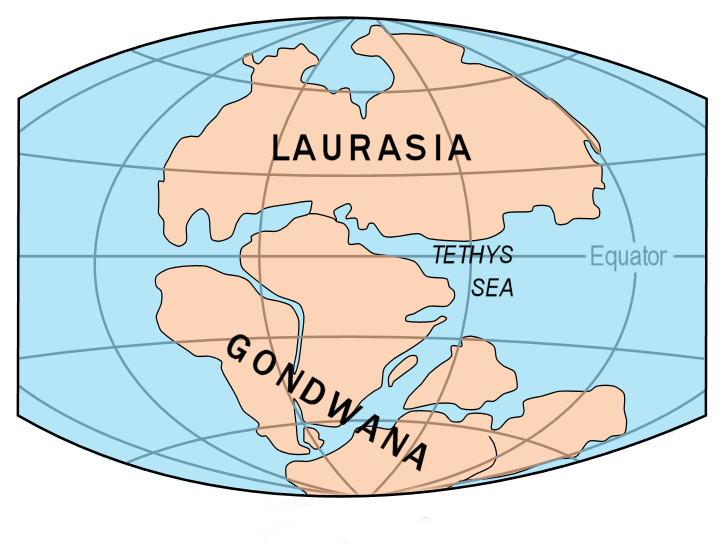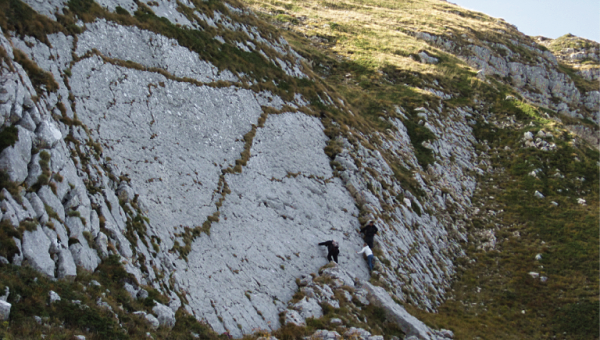by Editorial Staff
![]() A new Lower Cretaceous (lower Aptian) dinosaur tracksite, from the eastern side of Monte Cagno have been discovered recently in Abruzzo, Italy. Different styles of track formation are represented on the site surface. Most of the footprints are preserved as deep tracks, produced by trackmakers sinking into soft mud. Some tracks, better preserved than the others, are characterized by metatarsal impressions and were interpreted as the resting traces of a crouching theropod (based on their orientation and three- dimensional morphology).
A new Lower Cretaceous (lower Aptian) dinosaur tracksite, from the eastern side of Monte Cagno have been discovered recently in Abruzzo, Italy. Different styles of track formation are represented on the site surface. Most of the footprints are preserved as deep tracks, produced by trackmakers sinking into soft mud. Some tracks, better preserved than the others, are characterized by metatarsal impressions and were interpreted as the resting traces of a crouching theropod (based on their orientation and three- dimensional morphology).
The 135 cm length of the track with metatarsal impressions indicates huge pedal proportions and represents the largest theropod trackmaker ever documented from the Mesozoic peri-Adriatic platforms of Italy. The discovery was made by a group of scholars of the Institute of Geophysics and Volcanology (INGV) and “La Sapienza” University of Rome. The results of the study were published on the scientific journal Cretaceous Research (Elsevier).

Continental drift, the movement of the Earth’s continents relative to each other, thus appearing to “drift” across the ocean basin. Map of the ancient supercontinent Pangea with Laurasia and Gondwana. It represents the structure of the continental masses and ocean basins at the age of the dinosaurs – Image source

 Fame di Sud Il sud Italia come non lo avete mai visto
Fame di Sud Il sud Italia come non lo avete mai visto




